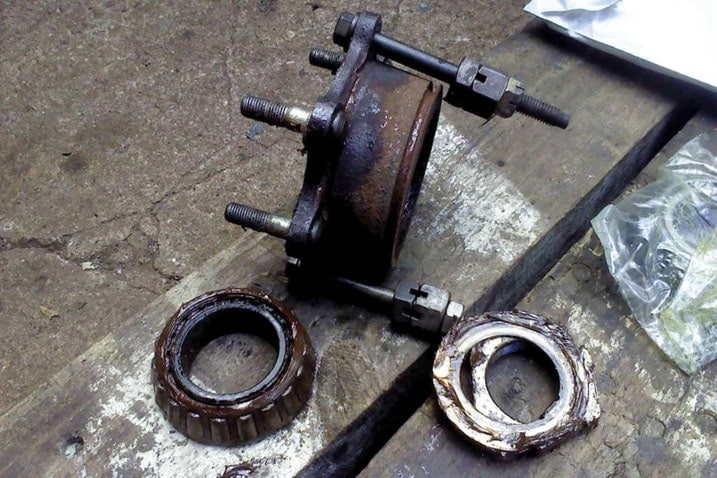Photo: Nemo355 via MQPatrol.com
Are you a car owner looking to stay ahead of your vehicle maintenance needs? Understanding the key components of your car can prevent stress and save you time and money. Wheel bearings are a small but important part of your car's steering and braking that often goes unnoticed until a problem arises.
Learning about wheel bearings helps you catch issues early and avoid more costly repairs. Let's dive into everything you need to know about wheel bearings — from their function and importance to diagnosing and fixing common problems.
What are wheel bearings?
Wheel bearings are essential to a vehicle's wheel assembly. These sets of steel balls (ball bearings) or tapered rollers (tapered bearings) are held together by metal rings called races. Positioned on an axle shaft, wheel bearings enable wheels to spin with minimal friction. They support the vehicle's weight and allow for smooth rotation, ensuring a stable and efficient ride.
Importance of wheel bearings in a vehicle
Wheel bearings play a vital role in a vehicle's overall performance. They reduce friction, allowing the wheels to turn smoothly and efficiently. Properly functioning wheel bearings ensure vehicle safety because they help you maintain control during driving. Without good bearings, your brakes, suspension and steering system can suffer significant wear and tear, leading to expensive repairs and safety issues.
Signs of a bad wheel bearing
Recognizing the signs of a bad wheel bearing can help you address issues early and avoid more significant problems.
Strange noises coming from the wheels
Unusual noise is typically the most common indication car owners notice. The noise often sounds like grinding, humming or growling and can be most easily heard at lower speeds. As the bearings wear out, the metal components scrape against one another, alerting you that something's wrong
Uneven wear on tires
If your tires wear out more quickly on one side, it could be due to worn bearings. This uneven wear occurs because the compromised bearing causes the wheel to wobble, leading to irregular tire contact with the road surface.
Steering wheel vibration
When turning or driving at high speeds, you might notice your wheel vibrating or shaking. This can also indicate a bad wheel bearing. As the bearing deteriorates, it causes stability issues in the wheel, transmitting vibrations through the axle and into the steering system.
Types of wheel bearings
Understanding the types of wheel bearings and their common causes of wear can help in maintaining your vehicle.
Ball bearings
Ball bearings are designed to handle radial and axial loads, making them suitable for many types of vehicles. Ball bearings consist of small metal balls encased in a metal ring, allowing for smooth and efficient rotation.
Tapered bearings
Tapered bearings are designed to handle large radial and axial loads, making them ideal for heavier vehicles, such as trucks and SUVs. They consist of tapered rollers positioned between inner and outer races, providing greater durability and support under heavy loads.
Common causes of worn wheel bearings
Wheel bearings can wear out for several reasons.
Lack of lubrication
One of the main causes of worn bearings is a lack of lubrication. Bearings need proper lubrication to reduce friction and prevent metal-to-metal contact. Without adequate lubrication, the bearings can overheat and wear out prematurely.
Road salt and debris
Road salt, dirt and debris can infiltrate the bearing assembly, leading to corrosion and damage. These contaminants cause the bearings to wear out faster, especially in regions with harsh winters or unpaved roads.
How to diagnose and fix bad wheel bearings
Regular inspection and timely repair using the right tools, such as an impact wrench and bearing puller, can ensure your vehicle remains safe and reliable on the road.
To diagnose and repair bad wheel bearings, you must first gain access to the wheel bearing or hub assembly. This involves removing the wheel, brake caliper, and rotor. If you don't feel comfortable taking these apart, you might want to have a skilled mechanic handle the procedure.
Use an impact wrench to remove the axle nut.
Ensure you apply the correct torque to avoid damaging the components.
Use a bearing puller to remove the old bearing assembly.
Take care to avoid damaging the axle or surrounding parts.
Unscrew the hub bolts and remove the old hub.
Have plenty of rags handy as grease and grime get messy.
Install the new wheel bearings.
Replace all parts in reverse order.
If you have any doubts, call your mechanic and schedule an appointment for the repair.
